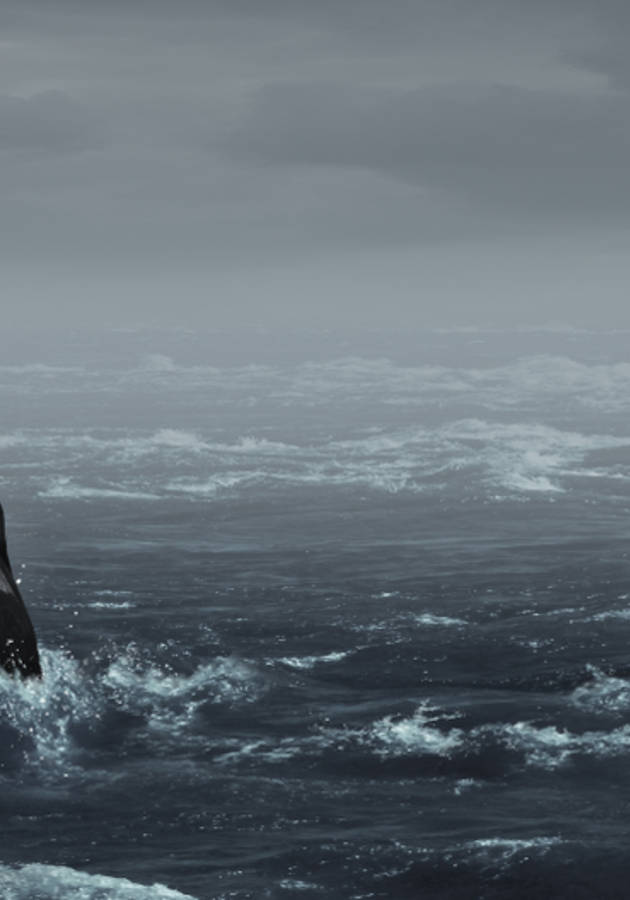On the morning of Tuesday, September 11, 2001, four American passenger airliners bound for California were hijacked by 19 al-Qaeda terrorists. Two of the flights – American Airlines Flight 11 and United Airlines Flight 175 – crashed into the Twin Towers of the World Trade Center, causing their collapse 102 minutes later. A third plane, American Airlines Flight 77, crashed into the first and second floors of the Pentagon, killing everyone aboard and another 125 people in the building. The fourth plane, United Airlines Flight 93, was diverted in the direction of Washington, D.C., but instead crashed in an empty Pennsylvania field, after passengers overpowered the hijackers.
Excluding the terrorists, 2,977 men, women and children died during the coordinated terrorist attacks, by far the deadliest in human history. Thousands more sustained physical injuries or suffered life-long negative health effects, such as respiratory, emotional or other ailments. “Fall and Rise” by Mitchell Zuckoff tells their story, relying on interviews with survivors, trial transcripts, government studies and many relevant books. Throughout the 624 pages of his remarkable and gut-wrenching masterpiece, he introduces us to hundreds of known and unknown individuals, each of them worthy of remembrance and separate consideration. Get ready to meet just a few of them.
A side note on the act of remembrance
About two and a half millennia ago, supposedly on the day Alexander the Great was born, a Greek arsonist – whose name isn’t worthy of being repeated here – set fire to the temple of Artemis, one of the Seven Wonders of antiquity. His sole purpose was fame: he wanted to leave his mark on history and die a known man.
To thwart his intentions, his fellow citizens devised the damnatio memoriae law, or the law of oblivion, according to which every Greek was forbidden from ever mentioning the name of the arsonist, verbally or in writing. Unfortunately, a historian by the name of Theopompus disobeyed the order, so the name of the perpetrator of this vainglorious act has lived on to this day. Ironically, we still haven’t discovered the name of the brilliant architect who built the Temple of Artemis.
It is, in many ways, the sad story of history. Even today, we still tend to remember destroyers as much as (and even more) than creators. What is more, outside their closest friends and family, the names of the ordinary people are forgotten with their deaths. And they, the ordinary people – as the wonderful Czech writer Jaroslav Hašek wrote a century ago – never burned a temple to get their name into the school reading books. That, in itself, should be a reason enough to remember them.
The simple creed of Wally Miller
Wally Miller, a second-generation funeral home director in Shanksville, seems to have understood the essence of remembrance better than anyone. In 1977, as a 20-year-old, he pronounced his first death. Twenty years later, he was elected county coroner. Just four years after that, on September 11, 2001, he got a call notifying him that an airplane, United Airlines Flight 93, had crashed down in a Somerset County strip mine.
He was one of the first to reach the crash site. It didn’t take him long to realize that he was witnessing one of the worst terrorist attacks in American history. Before too long, he started burying the people, became an FBI assistant in the investigation and a key liaison for the family members of the victims.
In an interview conducted six years after 9/11, Miller explained what inadvertently made him the local spokesman and the keeper of the crash site – simple and profound creed. “You’ve got to remember,” he said, “that everybody that dies – that’s somebody’s favorite guy, whether it’s a prisoner or the richest guy in town or somebody else.”
Books remember what people forget
With time, news becomes history, and history “undercuts our ability to empathize with the immediate concerns of those who suffered through it.” After all, as they say, history is what happens to other people. But 9/11, in a way, happened to everybody, even the then-unborn. If people have forgotten some things about it, books haven’t. “Even if words might fail,” writes Zuckoff, “they’re the best hope to delay the descent of [the day] into the well of history.”
Regrettably, the names of each of the 19 terrorists – just like that of the ancient Greek arsonist – will endure, eternally etched in our history books. We won’t repeat them here, because we’d rather they weren’t. On the other hand, most of the nearly 3,000 innocent victims of their gruesome acts – even the so-called Falling Man captured plummeting to his death in that well-known photograph – remain anonymous to this day.
Who were they? What were they doing on the morning of September 11, 2001? Did they live to see the next day? If not, how did their friends and family cope with the news? These are only some of the questions Zuckoff tries to answer in “Fall and Rise.” Let’s attach, with him, names to some of the individuals directly affected by 9/11. And let’s tell a few of their stories. We owe them at least that.
It’s a small world
About 1.5 hours before Wally Miller received a phone call notifying him of a plane crash in Shanksville, that same plane had taken off from Newark International Airport. It carried seven crew members, 33 passengers and, unknown to anyone, four hijackers.
One of the passengers was Mark Bingham, a 31-year-old public relations executive. That morning, he overslept and would have probably missed Flight 93 if it hadn’t been for a kindly gate agent who opened the jetway door and let him board. Six rows behind him sat Todd Beamer, who graduated one year ahead of Mark from the same high school. Both were schoolboy athletes and may have even recognized each other on the plane.
Jeremy Glick and Thomas E. Burnett Jr., both of them sales reps in their 30s, were blessed with athletic physiques as well: Tom was a former high school quarterback, and Jeremy a former national collegiate judo champion. A fire on September 10 at the Newark airport forced Jeremy to switch planes. Tom had originally booked a later flight, but he also switched to Flight 93 to get home sooner to his wife and three daughters. Forty-six minutes after takeoff, he – and everybody around him – realized that wasn’t going to happen.
It’s a brave world
At 9:28 a.m., the hijackers stormed into the cockpit of Flight 93. “Mayday … Mayday!” screamed Captain Jason Dahl into the radio. It soon became clear that the source of the emergency wasn’t mechanical, but human. Passengers started calling their families and friends. The calls that connected, writes Zuckoff, “formed a spoken tapestry of grace, warning, bravery, resolve and love.”
Mark learned from his mother Alice that the hijacking was a suicide mission and a part of a coordinated terrorist act. “If you possibly can,” Alice wrote after the initial call dropped, “try to overpower these guys, ’cause they’ll probably use the plane as a target.”
Mark heeded her words. He, Jeremy, Thomas and Todd quickly concocted a plan to overtake the plane. Their revolt surprised the hijackers and resulted in the crash of the plane into the empty Shanksville field, almost certainly saving hundreds of lives.
Lieutenant Sweeney and Captain Morgan
During the weeks before the terrorist attacks, Brian David “Moose” Sweeney, a former Navy lieutenant who flew in an F-14 during the Gulf War, talked frequently about death with his wife of three years, Julie. “If I died,” he said to her once, “you should throw a party. You invite all my friends and you drink Captain Morgan and you live. And if you find somebody, you remarry. I won’t be angry or jealous or whatever.”
On the morning of September 11, Julie drove Brian to the Cape Cod airport in Hyannis for a connecting flight to Boston. There, Brian was supposed to board United Flight 175 and head for California, something he did once per month for work. He’d normally be gone Monday through Friday, but this time he decided to extend his weekend and leave on Tuesday. He told Julie he’d be back a day early, so they could spend the last summer weekend together.
Those were the last words the two shared. Julie wasn’t home when Brian realized that his plane was hijacked, so he had to leave her a message on the answering machine. “I just want you to know I absolutely love you,” the message said. ”I want you to do good, go have a good time. Same to my parents and everybody. And I just totally love you, and I’ll see you when you get there.”
Peter Rabbit
After calling his wife, Brian Sweeney tried to reassure his mother as well. At the same time, Peter Hanson, a 32-year-old computer software company executive, tried comforting his father. “Don’t worry, Dad,” he said to him. “If it happens, it’ll be very fast.” Peter was joined on the flight by his wife Sue, a doctoral candidate, and Christine, their two-year-old daughter. They were planning to visit Disneyland.
Peter’s parents, Lee and Eunice, at first thought that he was joking. But when they turned on their TV, they could see the North Tower of the World Trade Center in flames, and United Flight 175 heading ominously toward its twin. At 9:03 a.m., Peter pressed his wife and daughter against him and uttered the final words to his father: “Oh my God ... oh my God, oh my God.” Then there was a woman’s shriek. Then, Lee and Eunice saw their son’s plane hurtling into the south tower, live, on TV.
The night before, their granddaughter Christine – the youngest person to die in the attacks – went to sleep in her new big-girl bed hugging her favorite stuffed animal, Peter Rabbit. Before the Hansons left their home the following morning, she tucked Peter under the covers “to keep him safe until she returned.” It was there that Lee and Eunice later found the rabbit, waiting for his guardian. They took Peter with them and subsequently donated it to the National September 11 Memorial & Museum in New York. It is still there.
Until the afterlife unites us
Lee and Eunice had to wait 10 years for justice. On May 2, 2011, the mastermind of the September 11 attacks was shot and killed by U.S. Navy SEALs in Pakistan. Eunice was overwhelmed by tears and mixed emotions. “It’s not going to bring my kids back,” she told an interviewer later that day. “I don’t believe in the word ‘closure,’ because this is not a book.’’
Feeling the same, many other men and women couldn’t bear the absence of “closure” for long. Prasanna Kalahasti, a dental student, was one of them. Before her husband Pendyala Vamsikrishna boarded American Airlines Flight 11, he left her a voicemail to tell her he’d be home for lunch. A month later, she hanged herself in their apartment. She left a suicide note that her brother found. “I love Vamsi too much, and the pain is excruciating,” the note said. “If there exists any form after this life, I’ll be with him. If not, it will relieve me from this deep pain.”
To try when your arms are too weary
When American Airlines Flight 11 crashed into the North Tower, aspiring actor and temp worker Chris Young was in one of the building’s 10 giant express elevators.
Shortly before the elevator reached the lobby, the lights started flickering and the car shuddered to a stop. Oblivious to the reason behind this strange event, Chris pressed the red emergency button. No help arrived in the following hour. Chris’ initial boredom turned into panic. To relieve himself, he started singing lyrics from “Man of La Mancha,” the 1965 musical. “To love pure and chaste from afar,” his voice echoed through the walls, “to try when your arms are too weary…”
Eventually, Chris managed to wriggle his fingers into a crack of the metal doors of the elevator and pull them open a few inches. He found an empty lobby, “a modern ghost town after an unspeakable horror.” He couldn’t surmise the extent of the disaster, and neither did he have time to. At 10:28 a.m., he heard someone yelling “Run!” And so he did – toward safety, and a new life. No more than a few moments later, the North Tower collapsed behind him.
How do you thank someone for saving your life
Josephine Harris, a bookkeeper just a week shy of her 60th birthday, couldn’t run. Recovering from injuries suffered in a car accident a month before the 9/11 attacks, she had to “limp down about one thousand steps” from the 73rd to the 20th floor. An office manager and a few other people helped her get that far. However, if it wasn’t for Captain Jay Jonas and the firefighters of Ladder Company 6 – who carried, dragged and pushed the exhausted woman to safety – she wouldn’t have made it.
The same holds true for Jerry Henson, a 65-year-old former combat aviator, who was imprisoned under a huge wall of debris. He would have certainly died if U.S. Navy Lieutenant Commander Dr. David Tarantino hadn’t crawled through the smoke and the rubble to rescue him. Jerry lived for 16 years after 9/11 and got to see his granddaughter. To his dying day, he couldn’t stop asking himself, “How do you thank someone for saving your life?” Well, probably the least you can do is remember their name forevermore.
Final notes
9/11 is one of the most documented and analyzed events in modern history. And yet, we feel that “Fall and Rise” needed to be written. Described aptly by a reviewer as “an exhaustive, prismatic chronicle of 9/11,” Zuckoff’s book is not only a reminder, but also a demonstration of what reminders should look like.
“A minute-to-minute, suspenseful, heart-wrenching and inspirational narrative,” commented Glenn Altschuler in an April 2019 review for “Star Tribune,” “’Fall and Rise’ should endure as a prose poem memorial to a day like no other.” Indeed, it should.
12min tip
Remember, remember the 11th of September. So that it never happens again.





























